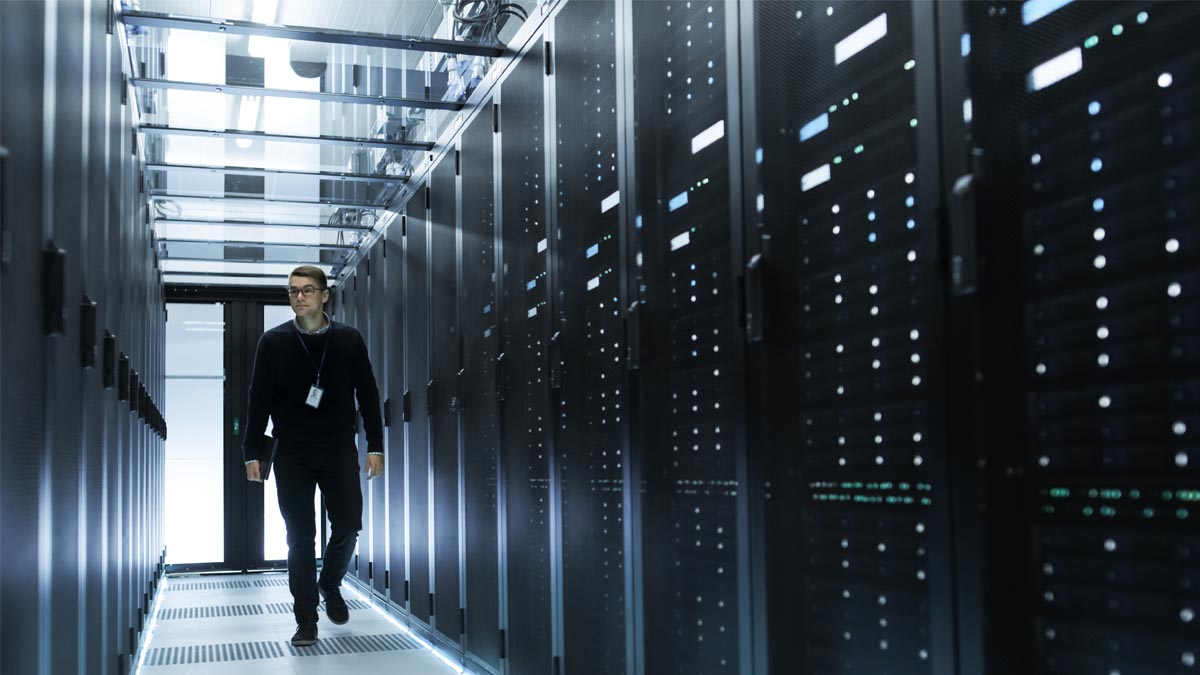5 Data Disasters and How to Protect Yourself from Risk

Table of Contents
Don’t Be Caught Without A Backup Plan
Just two days ago, the multinational technology conglomerate, General Electric (GE), announced that it had experienced a security incident and that the personally identifiable information of its current and former employees, had been left exposed and accessible, leaving many at risk of security compromise.
But this is not the first large security incident of this year– this wasn’t even the first of this month; T-Mobile, Carnival Cruise Lines, J. Crew and others announced security breaches in the previous weeks. Let’s not forget the numerous recently reported cyberattack efforts aimed at the World Health Organization (WHO) in the wake of the Coronavirus pandemic.
We’ve grown accustomed to the stories; security hacks, network outages, hardware or software failure…
The truth of the matter is, as a global ever-increasing reliance on technology grows, with it grows the vulnerability to data security incidents. It is now imperative that individuals and businesses become more proactive web presences through investing in the protection of data; as well as that of their clients, employees and other associates.

The Intrinsic Cost of Data Loss
Data compromise results in more than the loss of security: it can also mean the loss of business reputation– not to mention the aggregate costs of data recovery and legal mitigation.
Today, data is much more than information; it is a valuable, or in some cases invaluable, asset.
Who Is Vulnerable to Data Disasters?
Whether you are a financial services firm, non-profit organization, large healthcare network or engineering firm in Kansas; anytime you use the web as a business tool, you are at risk of suffering a data security incident. While there will always be security threats, data protection and safety are readily available. Through education, resourcefulness and the help of data experts, you can guard yourself and your business against data disasters.

5 Types of Data Disasters
1. Cyber Attacks/Hacking
Cyber-attacks, or cyber-crime, is an act wherein one or more computers is used against another computer or network of computers. This is done maliciously to disable computers, destroy networks, steal data or gain access of a computer to launch further cyber-attacks.
The newest trend in cyber-crime is ransomware. Ransomeware is a type of malware that exists to corrupt a computer’s system, locking users out until a ransom is paid.
Protection Against Cyber Attacks
To protect your business against cyber attacks here are a few of the steps you can take:
- Regularly back up the computers on your network
- Educate yourself and your employees on how to spot cyber threats and the dangers of unsecured networks
- Invest in anti-malware and firewall software
- Restrict your network admin access to just a small group of people
Additionally, consider working with IT cyber security experts to help your business create and implement data security and disaster recovery plans.
2. Physical Loss
Most of us at some point or another, will conduct our business on a portable device and some of us exclusively rely on our laptops and mobile devices to keep our businesses running.
The flexibility of working with smaller devices is freeing, but they are also easy to misplace, or steal.
Protecting Against Physical Loss
Ensure your data is backed up to multiple locations and perform those backups regularly and implement a data recovery plan. Don’t exclusively store any important or confidential data on mobile devices and put a cloud or data redundancy plan in place.
Also, strongly consider installing an alarm or security tracking measures on your device.
3. Natural Disasters
As unpredictable as it can be disastrous, nature is a data adversary that can cause extensive damage. Strong storms, flooding and fires are impossible to control. Even without physical disasters, storms that cause network outages or surges can lead to costly downtime.
Protecting Against Physical Loss
Protect yourself by regularly backing up data to an offsite source (such as cloud storage) and creating a business disaster security plan and a data recovery plan that are continuously reevaluated and updated as needed.
4. Human Error
Sometimes we make mistakes. That delete button can be tricky; and even though “back up your data” is likely going to be the mantra of the century, you may still forget to do it once, or twice…
Protecting Against Human Error
This truly isn’t as impossible as it may sound, at least from a data risk standpoint. A few practices can mitigate the disaster of an inevitable “oops” moment.
Include in your data recovery plan several layers of IT security, this way your data can be backed up, encrypted and retrieved when needed. Also, setting up a two-step authentication process when deleting files prevents accidental data loss.
5. Corruption and/or Failure
The software and hardware that we rely on to house and protect our data can be imperfect. Storage systems can meet many points of error during the steps of reading, writing, processing, storage or transmission of data, causing it to become corrupted. Hardware malfunctions and software freezes can cause the loss of unsaved work or files.
Protect Against Data Corruption and Hardware and Software Failure
Refrain from using too many apps on your device at once to avoid overloading your OS. Be sure to perform regular hardware and software updates and troubleshoot any issues as they occur.
Last but not least, implement a data recovery plan and, of course, back up your files regularly to an offsite source.
Preventing Data Disasters
NetStandard’s award winning team of technology professionals helps business plan for a prevent data disasters, keeping data security well within their reach.
We help you review your business’s plans for disaster security and data recovery and assess if there is room for improvement.
Give us a call today at 913-428-4200 or contact us to have your data security questions answered.




